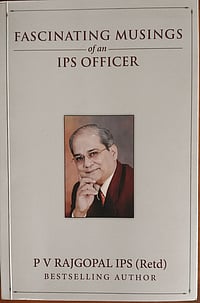In 1974 a friend gifted me John Le Carre’s book Tinker, Tailor, soldier, Spy adding that it would be difficult to understand unless I knew how spies worked. Although I joined that ‘business’ in 1976, it would still take a long time for me to understand the nuances of Cold War spy scrimmages. From then on, it was a long journey for me till 2017 when “Outlook” asked me to review Le Carre’s last “Smiley” novel, “A Legacy of Spies” (“A Coven of Spy Masters”, September 29, 2017).
Did Le Carre deliberately mystify and twist his plots by “brow-furrowing Germanic aphorisms and quotations”, as mentioned by the “London Review of Books” on 20 March 1980 to hide his initial reputation among the highbrow critics that “he couldn’t write”? Did “Stasi” consider him as an unimportant British spy resulting in recording nothing of importance in his file although he was posted to Bonn and Hamburg? In 2017 he revealed to the American National Public Radio (NPR) that his search of his own file with Stasi yielded nothing but press clippings although they had maintained “a far more interesting file” on his con-man father describing him as a rich arms dealer with intelligence connections, selling arms to the Indian subcontinent and Indonesia.
Were Le Carre’s main characters “Smiley” and “Carla” moulded on real persons or totally fictitious? In 1984 the late Donald McCormick, writing under the pseudonym of Richard Deacon had said that Le Carre had modelled “Smiley” on Sir Maurice Oldfield, who was MI-6 chief during 1973-78. In the late 1940s Oldfield was posted to Singapore where he developed great interest in Chinese astrology and on Mao Zedong’s budding intelligence unit. Deacon was told by his Chinese contacts that their intelligence knew, even in the 1950s, that Oldfield would one day head MI-6. French journalist Roger Faligot confirmed this in 2008 adding that Oldfield had obtained intelligence that Kang Sheng, intelligence chief of Mao, had advised him in the early 1950s to break with Moscow.
Deacon said that British film actor Alec Guinness had even copied Oldfield’s quirk of playing with his spectacles in the film adaptation of two of Le Carre’s novels. Surprisingly, Deacon also quotes Le Carre denying this. Instead he was supposed to have based Smiley after his old tutor Rev. Dr Vivian Green of Lincoln College, Oxford.
In 1979 Oldfield accepted Prime Minister Margaret Thatcher’s request to the post of Coordinator of Security & Intelligence in Northern Ireland to bring in a semblance of order between the warring Royal Ulster Constabulary and the British army while suppressing the insurgency. He was also able to raise the intelligence collection on Libya and others to new levels to deter insurgency.
Who was Le Carre’s model for “Karla”? In popular imagination, especially in Europe, it was Markus Wolf or “Mischa”, his Russian name or the “Man without a face”. His autobiography, jointly written by British journalist Anne McElvoy in 1999, was a best seller. Wolf ‘s achievements were copied by many film makers. His repeated tradecraft of using young handsome Stasi “Romeo” agents, called “Sexpionage” had produced great results. The “Stasi Files” came into the hands of the Western historians after the reunification of Germany in October 1990.
The other person, according to Americans was Rem Krassilnikov, who was the chief of the American department of the KGB’s Second Chief Directorate. James Risen, writing his obituary in New York Times (March 24, 2003) says that Krassilnikov was often compared with Karla, the famous antithesis of George Smiley. He had gained incomparable knowledge about the working of Western intelligence agencies after handling most of the Western defectors. His initial knowledge about Western intelligence was by debriefing MI-6 spies like Kim Philby and George Blake. In the 1980s he supplemented this by handling CIA and FBI defectors like Edward Lee Howard, Aldrich Ames and Robert Philip Hanssen.
Le Carre and Ian Fleming had raised the spying business to glamourous heights although in real life one may tend to agree with Stella Rimington, the first woman MI-5 chief, that the “most successful spies are the quiet, apparently boring and dull people who go on doing the same thing in an unostentatious way, year after year”.
[The writer is a former Special Secretary, Cabinet Secretariat]


























